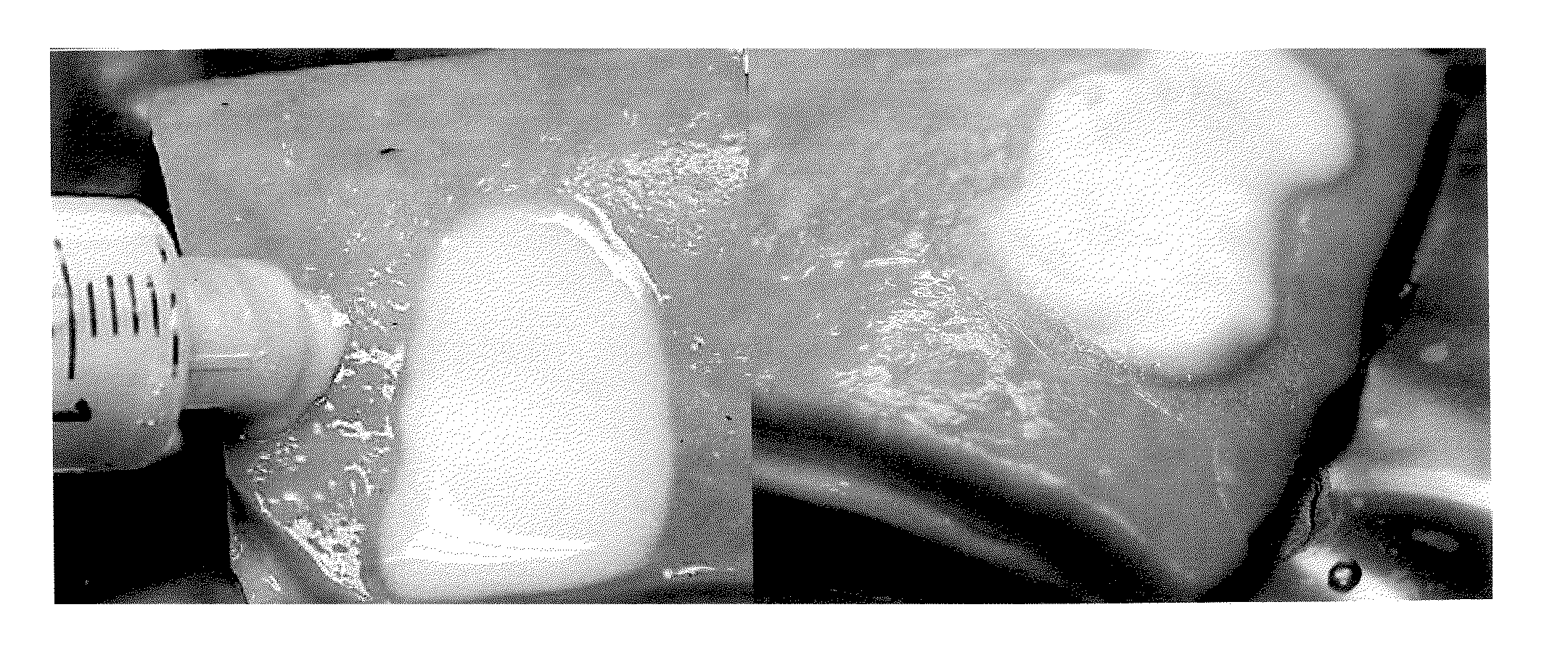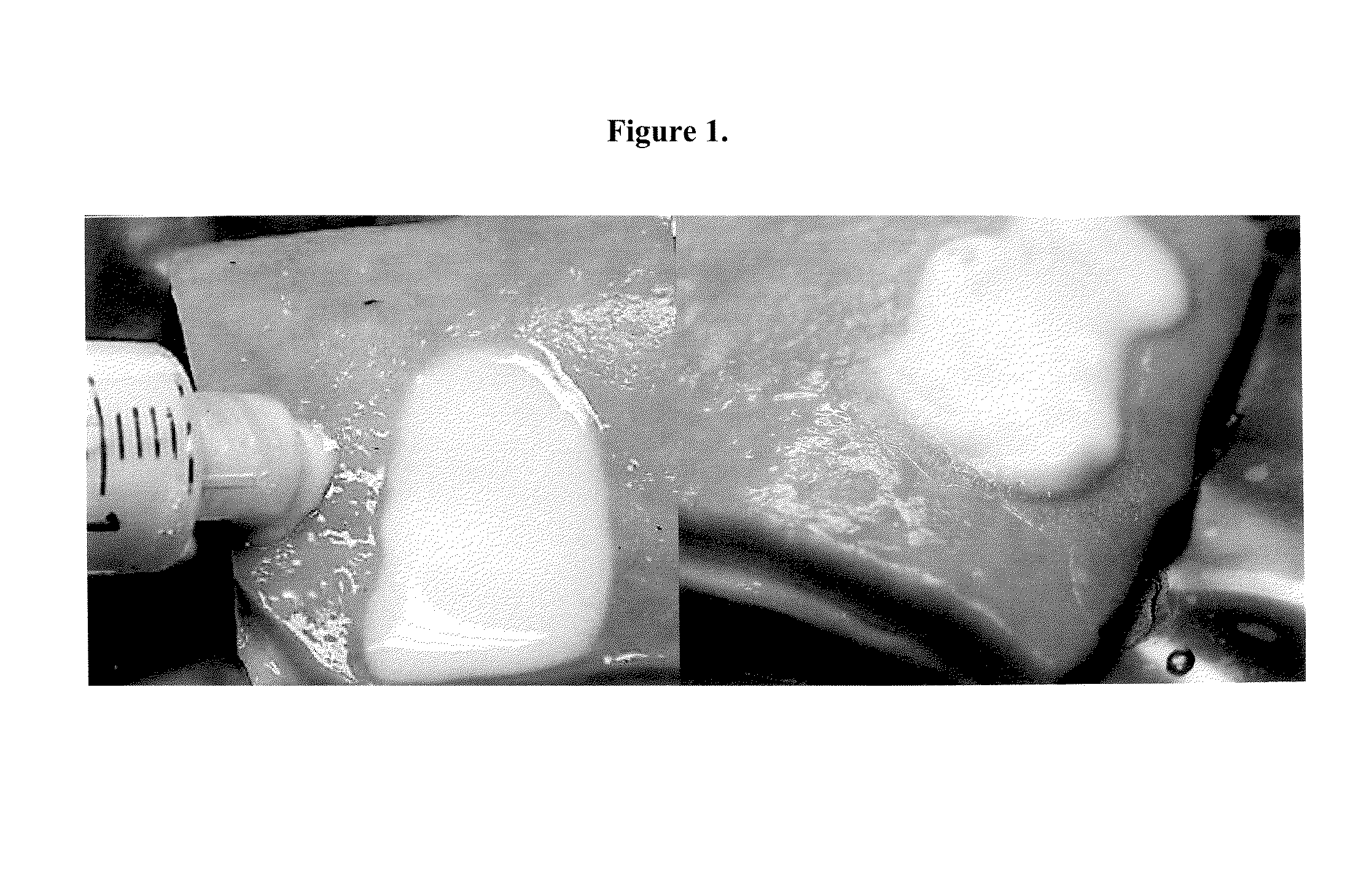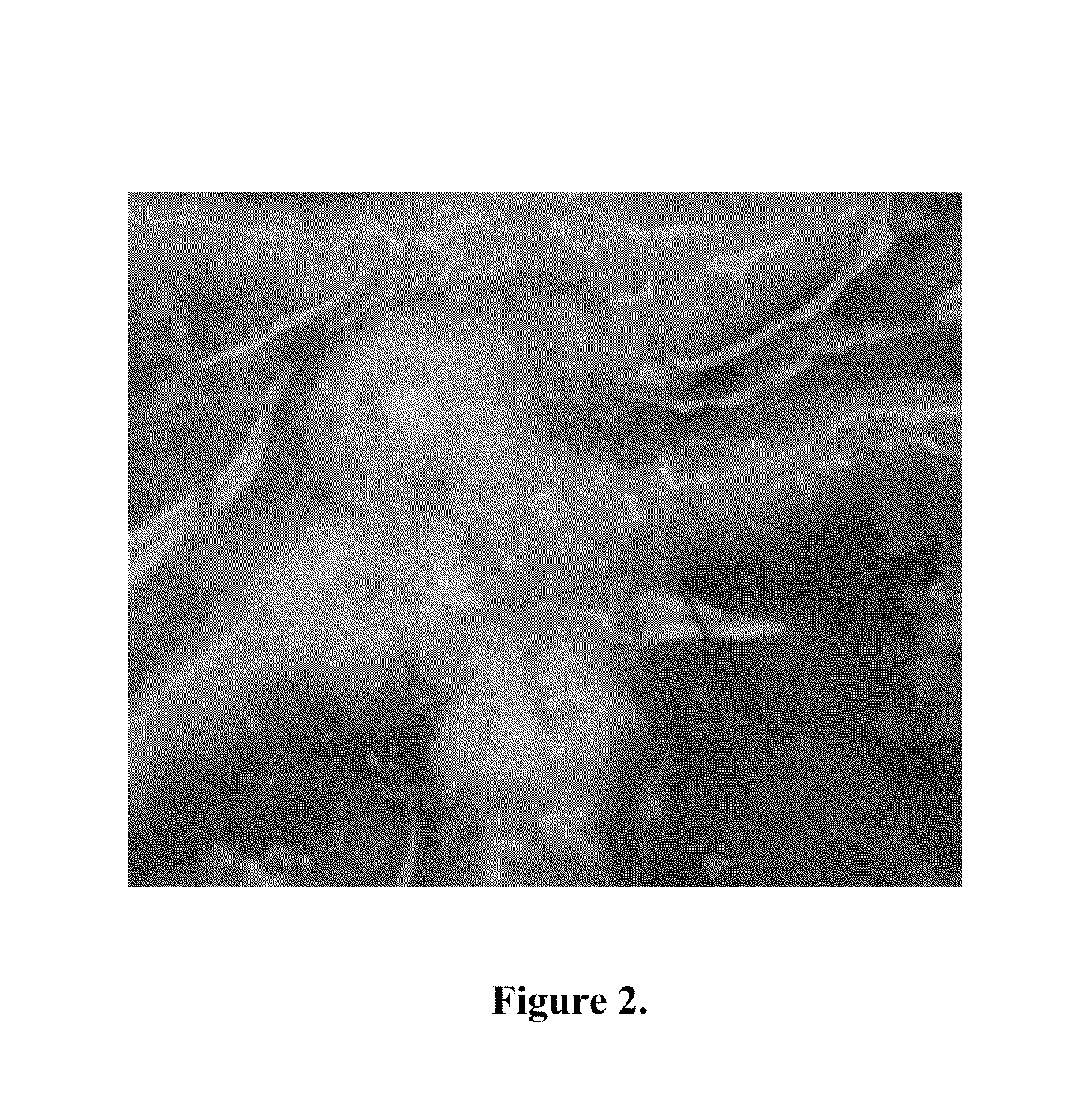Adhesive medical products and methods for treating gastrointestinal lesions
a technology of gastrointestinal lesions and medical products, applied in the direction of bandages, synthetic polymeric active ingredients, drug compositions, etc., can solve the problems of similar adverse events, inability to treat gastrointestinal lesions, and inability to use mucoadhesives for the treatment of gastrointestinal lesions. the use of mucoadhesives has not been previously proposed or documented
- Summary
- Abstract
- Description
- Claims
- Application Information
AI Technical Summary
Benefits of technology
Problems solved by technology
Method used
Image
Examples
example 1
Liquid Mucoadhesive Benchtop Testing
[0084]Various solutions of Carbopol™ were tested: (1) Carbopol™ dissolved in ethyl acetate, (2) Carbopol™ dissolved in ethyl alcohol, and (3) Carbopol™ dissolved in water. The Carbopol™ solutions were applied to excised stomach and intestinal tissue.
[0085]Specifically, all three solutions of Carbopol™ were loaded into a syringe and injected directly at the lesion site through a catheter. Ethyl acetate (as shown in FIG. 1) was found to be a most suitable solvent to allow the highest concentration of Carbopol™. The next best was ethyl alcohol followed by water which was necessary to be highly dilute.
[0086]Next, the dye indigo carmine was mixed with the ethyl alcohol solvent. This solution remained white, with small blue particles of the dye suspended in it. However, upon application to the tissue the suspension turned blue as water from the tissue became absorbed into the adhesive. This suggests that use of a dye may be suitable for visualization of...
example 2
Animal Survival Testing
[0087]To determine the sustainability and protective effects of a coating over an extended period of time (up to 72 hours), a mucoadhesive coating was applied to post-mucosectomy sites and compared to untreated (negative control) mucosectomy sites.
[0088]Specifically, to test the sustainability of Carbopol™ 71G NF powder, the powder was sprayed onto 5 post-mucosectomy sites in a live animal and compared to five negative controls (mucosectomy sites without the application of the spray) at 72 hours post treatment. At 72 hours following the application of the Carbopol™ 71G NG powder, the animal was sacrificed and tissue samples were harvested for gross and histological examinations.
[0089]FIG. 2 is an example of a power form of the mucoadhesive coating on a post-mucosectomy site at time 0.
[0090]Referring to FIGS. 3A-D, an initial gross examination revealed a thin gel layer still residing over the Carbopol™ powder-treated post-mucosectomy sites at 72 hours following...
PUM
 Login to View More
Login to View More Abstract
Description
Claims
Application Information
 Login to View More
Login to View More - R&D
- Intellectual Property
- Life Sciences
- Materials
- Tech Scout
- Unparalleled Data Quality
- Higher Quality Content
- 60% Fewer Hallucinations
Browse by: Latest US Patents, China's latest patents, Technical Efficacy Thesaurus, Application Domain, Technology Topic, Popular Technical Reports.
© 2025 PatSnap. All rights reserved.Legal|Privacy policy|Modern Slavery Act Transparency Statement|Sitemap|About US| Contact US: help@patsnap.com



